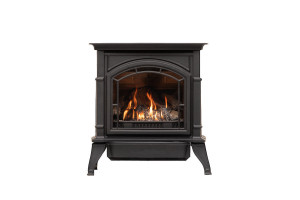
Breckwell Direct Vent Gas Stove with Blower & Remote Control
Breckwell Fireplace Premium Hearth Products

Breckwell Fireplace Premium Hearth Products

Breckwell Fireplace Premium Hearth Products

Breckwell Fireplace Premium Hearth Products

Gas fireplace stoves offer an ideal blend of traditional allure and modern efficiency. Key features typically include:
For an expansive selection, consider LuxuryFire.com, which is known for high-end, reliable stoves. Their certified team provides free shipping, facilitating a seamless upgrade to your home's warmth and elegance.
Free Standing Gas Fireplaces are a beacon of comfort, providing warmth quickly and effortlessly. The luxury of heating your space with the simple press of a button ensures a warm environment without the complexity of traditional wood stoves. They eliminate the inconvenience of procuring and storing logs and the need for cleaning up soot and ash.
Maintenance Made Simple
The customization options available with gas fireplace stoves make them a superior choice for regulating indoor temperatures. They empower you with options like thermostatic controls, remotes, and blowers, offering an adaptable heating experience. With these tools, one can craft the ideal ambiance for every moment.
Personalized for Your Comfort
Gas fireplace stoves stand out as an eco-friendlier heating method. Utilizing gas results in fewer pollutants released into the atmosphere compared to wood, reducing your environmental impact.
Eco-Conscious Heating
Their flexible installation options accommodate any living space. Whether supplementing an existing hearth or as a splendid standalone focal point, a gas fireplace stove can fit aesthetically and functionally within your home.
Adaptable to Your Space
When browsing for a gas fireplace stove, there are several aspects to consider that will ensure you enjoy not only warmth but also safety, convenience, and style. Here are some key considerations:
Furthermore, if you are shopping online, make use of features like "Remember Me" to keep your selections easily accessible during your decision-making process.
When opting for a gas stove freestanding, consider several key factors to ensure the right match for your needs:
Gas or propane fireplace freestanding stoves generally offer higher efficiency compared to traditional wood-burning fireplaces due to the following reasons:
A blower in a gas fireplace stove enhances the appliance's functionality:
Routine maintenance is fundamental for performance and longevity:
When choosing the size and heating capacity, consider:
By adhering to these guidelines, individuals can make informed decisions regarding their gas fireplace stove choices and ensure optimal performance and satisfaction.
Yes, freestanding gas fireplaces are very efficient, rated between 70% to 90%, especially for direct-vent models that draw air from outside and minimize heat loss.
Yes, as long as the fireplace opening and chimney are compatible, a freestanding gas stove can be placed inside a fireplace.
Ventless gas fireplaces are banned or restricted in some states, including California and parts of New York and Massachusetts, due to indoor air quality issues.
Often, yes. A non-combustible hearth pad is required under and around the stove to protect the flooring and meet building codes.
A freestanding gas fireplace heats a room by burning natural gas or propane. The gas is ignited, typically by an electronic ignition or a pilot light, and then burns in a firebox, producing heat. A blower or fan system may be included to circulate the heated air throughout the room.
No. ventless fireplaces are only designed for gas either natural or propane. Burning wood in them is unsafe and violates the fire safety code.
Yes, most local codes require a permit and inspection for installing a gas fireplace to ensure proper venting and safe gas line connections.
While they’re designed to be safe, it’s not recommended to sleep with a ventless gas fireplace running due to carbon monoxide and oxygen depletion risks.
Unvented gas heaters were banned in some areas due to concerns about indoor air pollution, carbon monoxide buildup, and lack of oxygen ventilation.
Yes, it’s advised to crack a window open to maintain indoor air quality, especially during extended use, since ventless fireplaces release combustion byproducts into the room.